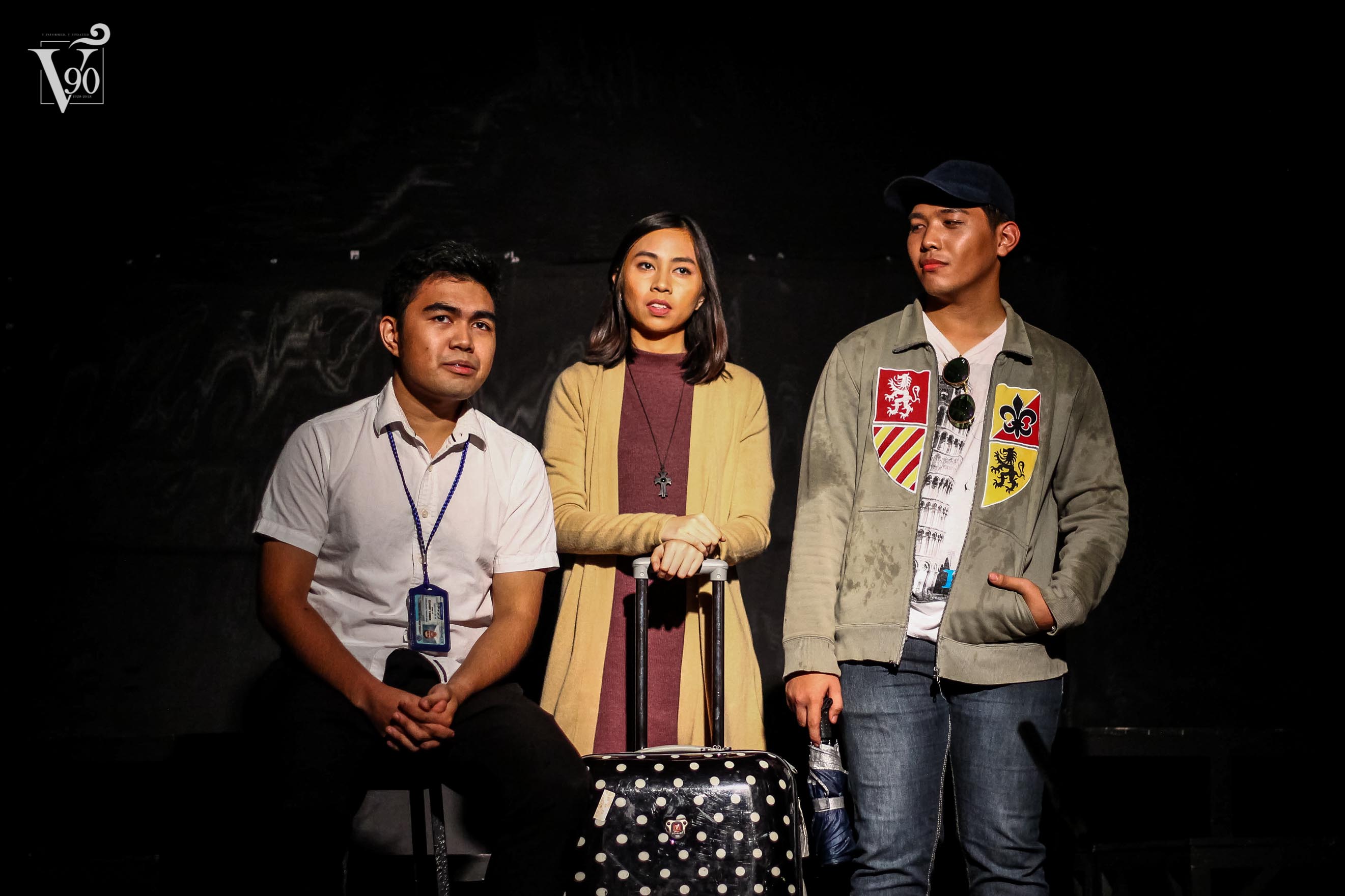A SERIES of one-act plays tackling life, love and death opened the 40th season of Teatro Tomasino, UST’s oldest theater guild, early September at the UST Thomas Aquinas Research Complex auditorium. “Ekis” was a series of four short plays written and directed by Teatro members and alumni that ran until Sept. 9.
Set A was a twin-bill consisting of Medical Technology student Rae Red’s “Kawalan,” a story about an elevator assistant and his daily encounters with building residents, and Floy Quintos’ Palanca-winning one-act play “Evening at the Opera,” about a couple’s confl ict over issues of control.
In Set B, struggles of life and death were highlighted in Journalism senior Rela Catucod’s “Baka Sakali,” centering on a man who helps his younger sister recover from a nervous breakdown, and Jay Crisostomo IV’s “Habulan sa Pagitan ng Malilit na Kamay ni Kamatayan,” about a couple speculating on their possible journeys after their inevitable
deaths.
Set C consisted of Allan Lopez’s “Higit Pa Dito,” a story about a mother and a son going through oedipal tensions, and Architecture major Alexandra Mora’s “The Best Day,” in which two sisters prepare their eulogy for their mother’s wake. Self-love was emphasized in Set D. Jayson Mondragon’s “Lipstik” revolves around the struggles of a chubby girl who lacks confidence, while Marketing Management senior Elijah Correa’s “Cliché” is about a couple having a hard time to showcase their true personalities to each other.
Teatro Tomasino has long been known for upholding the theater tradition in the University and nurturing the interests and talents of Thomasians in theater arts, said entertainer John Lapus, now on his last year as the guild’s professional adviser.
Theme of its 40th anniversary is “Banaag at Sikat,” which, according to Lapus, would
allude to the highs and lows of the guild.
Fran Omampo, co-adviser, noted that Teatro had been struggling to get the support of the campus for its productions, noting that past productions did not exactly draw huge crowds.
For audience development, he added, Teatro collaborated with other campus organizations. With the UST Salinggawi Dance Troupe, it staged plays about San Lorenzo
Ruiz’s martyrdom and about Blessed Justus Takayama Ukon, the Japanese samurai lord
who was exiled to the Philippines after refusing to renounce his Christian faith in the 17th
century during. The plays were staged during the fourth Philippine Conference on New
Evangelization, organized by the Archdiocese of Manila and hosted by UST.
Aside from collaborations, Omampo said continuous training was vital to ensure the guild’s survival.
“The best way to secure the future of Teatro Tomasino is by training the young
ones,” Omampo said. “Quality and excellence is something we adhere to. You’re only as good as your last performance, so every performance must be great.”
Teatro Tomasino was founded on Sept. 17, 1977 by Varsitarian alumna Myrna Hilario and Piedad Guinto, who were faculty members at that time, along with 25 students.
Its first production was celebrated Thomasian dramatist Orlando Nadres’ tragicomedy, “Ang Awit Na Hindi Matapos-tapos.” The play was directed by Maryo Delos Reyes, at that time a rising film director (he was later to direct the multi-awarded movie,
“Magnifi co”).
As a newborn organization, the guild had no permanent workspace and offi ce and shuttled from one offi ce to cramped offi ce several times. Its fi rst workplace was the “pigeon hole,” a cramped space inside the old Office of Student Affairs in the Main Building. From 1991 to 1998, it was housed at the back of the UST Grandstand and later, behind the Central Seminary. It is now housed at the Tan Yan Kee Student Center. To date Teatro had mounted at least 100 productions, starting with
“One of the secrets of Teatro Tomasino is its alumni members,” said Lapus. “They go back to help, to act, to mentor, to do some production works and
to have workshops.”
Alumni include Arnold Clavio, Eagle Riggs, Piolo Pascual, Wenn Deramas, Malouh Crisologo, Dang Cruz, and Charmaine Nueros.













